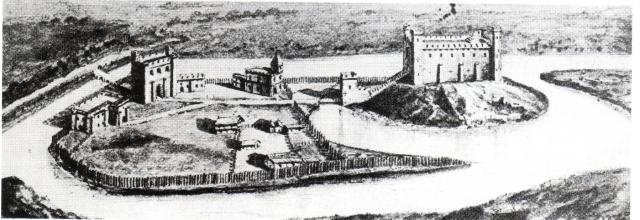There are a number of mysteries surrounding the origin of Waytemore Castle, as well as the mound on which it stood, and in truth its actual beginnings may never be determined. Some historians believe the mound began as a Celtic barrow, or grave mound, while others think it was a Saxon ‘buhr’ i.e. a moated and stockaded fortress adapted early in the 10th century by Edward the Elder as a defence against the invading Danes. Norman built, or Saxon, the transition of Stortford’s wooden fortress to masonry castle would probably have taken place soon after 1086, although it's thought the keep wasn't constructed before 1135. The castle was involved in a quarrel between King John and Pope Innocent III in 1205 when both supported different candidates for the Archbishopric of Canterbury. In the quarrel John destroyed Bishop's Stortford’s castle, though was forced to rebuild it by the Pope in 1214. John stayed in the castle for one night on 29th March 1216. In the grounds of the castle was a prison however this and the rest of the castle had fallen in to disrepair by the mid 16th century.
 Castle, Old
Castle, Old

 [ 1 ]
[ 1 ]  [
[

